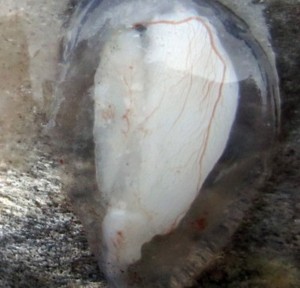
Scientists need a way to determine the birth streams of adult Chinook when they are caught in coastal fisheries. Once they have that information, they can begin to understand how freshwater habitat, the movement of fish and environmental factors can affect fish survival. Alaska’s Chinook salmon populations have declined dramatically in the past decade, and scientists are still trying to determine why.
“This is science responding to a societal issue and need,” said co-author Christian Zimmerman, U.S. Geological Survey ecologist and chief of water and interdisciplinary studies at the USGS Alaska Science Center in Anchorage. “Using this approach, we will be able to map salmon productivity and determine how freshwater habitats influence the ultimate number of salmon. With declines in Chinook salmon in Western Alaska, fishery and land-use managers need better information about freshwater habitats to guide conservation.”

Using data collected from adult salmon in 2011, the researchers not only determined which parts of the river produced the most fish but also found that the majority of Chinook salmon in the Nushagak watershed stayed in the same place for their entire first year before they migrated to the ocean. About 20 percent left their birthplace for short forays in the river’s lower main stem before swimming to the ocean.
Brennan now works with Daniel Schindler at the UW, where they will expand this work to include sockeye salmon in the same river. They will collect three years of Chinook data and two years of sockeye by end of the project, which will help determine whether birth and life history patterns in Alaskan rivers vary across years, or remain consistent.
The techniques used in Brennan’s study can also help scientists understand the behavior of other animal populations. Strontium also accumulates in things like bird feathers and teeth and also survives even after being fossilized. This allows researchers to study the movements of a wide range of animals including seals, whales, bison, ancient human populations and even dinosaurs.
Other co-authors are Diego Fernandez and Thure Cerling at the University of Utah, where all of the analyses for this research were conducted, and Megan McPhee at the University of Alaska Fairbanks.
This research was funded by Alaska Sea Grant and the U.S. Geological Survey National Institute of Water Resources program.
Pages: 1 2
